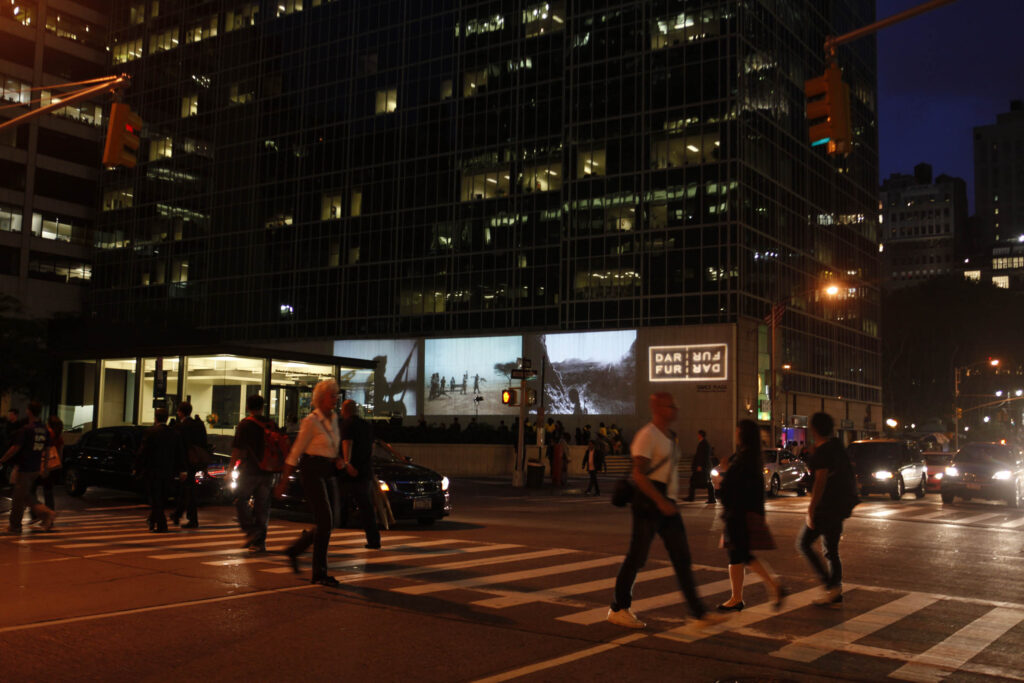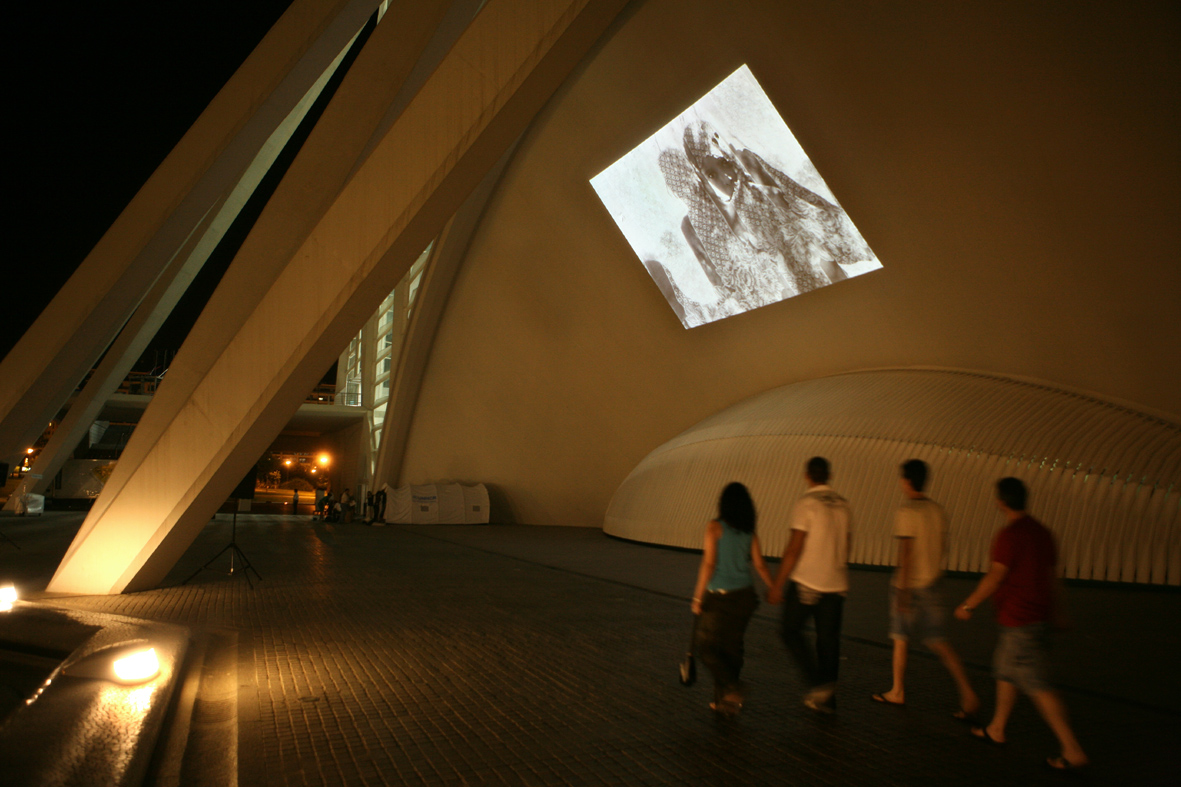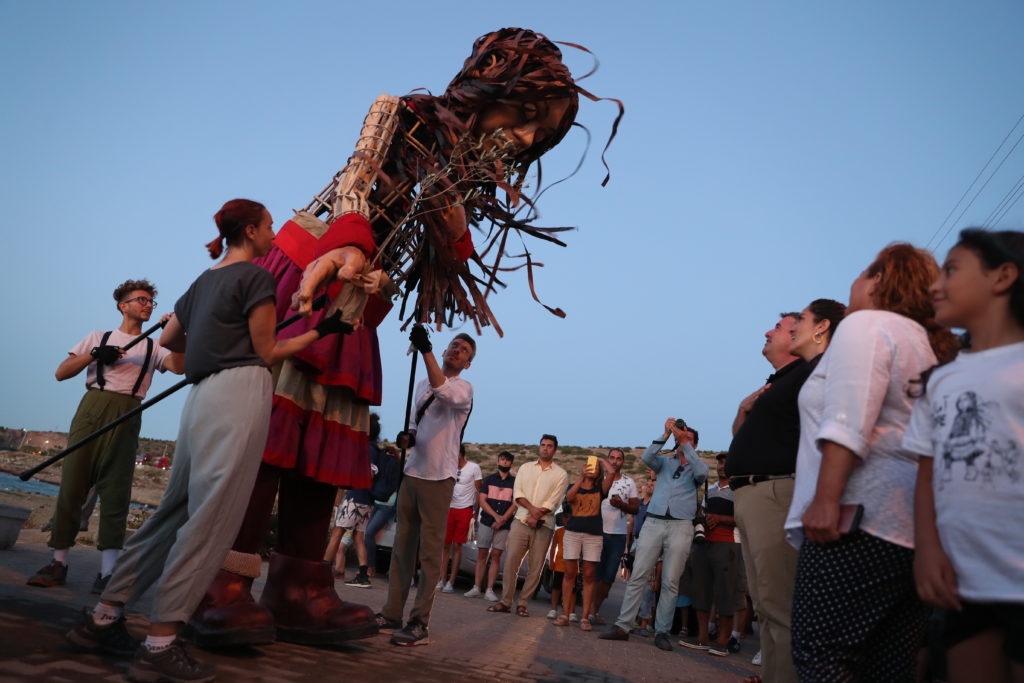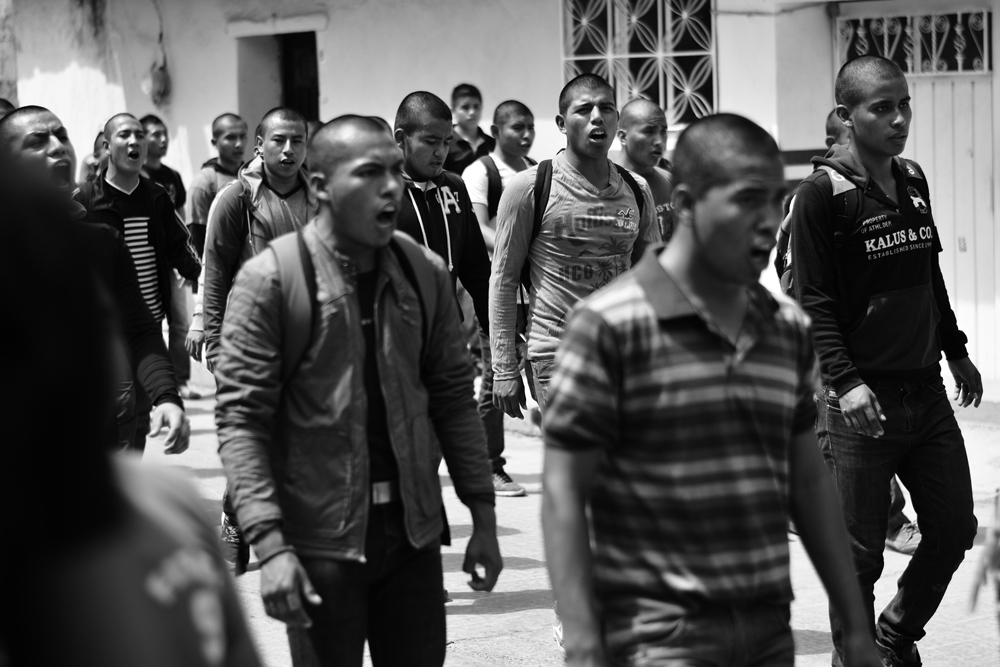DARFUR/DARFUR
About the Project
DARFUR/DARFUR was Art Works Projects’ first exhibit and is a traveling exhibit of digitally-projected changing images that provide visual education about the richly multi-cultural region while exposing the horrors of the ongoing humanitarian crisis.
In February 2003 the Darfur Conflict began when the Sudan Liberation Army (SLA) launched an insurrection to protest the Sudanese government’s disregard for the western Darfur region and its non-Arab population. The government of Sudan responded by allowing free rein to Arab militias known as the Janjawid (guns on horseback) who began attacking villages, killing, raping and abducting people, destroying homes and other property, including water sources and looting livestock, this violence has continued for almost two decades.
The Sudanese president, Omar al-Bashir, was ousted by the military in 2019 and a power-sharing agreement was reached between civil society leaders, protest leaders, and the military. However, in October 2021, the military seized control of the country’s transitional government in a coup. The military dissolves civilian rule, arrests political leaders, and declares a state of emergency. The coup also reignited civilian resistance, as protesters returned to the streets in cities and towns across Sudan to denounce the military takeover. The most recent numbers from the UN estimate that there are 3.71 million internally displaced people (IDPs) and 926,000 refugees in Sudan, the majority (67 per cent) are from South Sudan. Most displaced people are in Darfur, South Kordofan, and Blue Nile, which have been epicenters of conflict over the past 18 years.
In January 2011, The Republic of South Sudan was established as an independent country after an almost unanimous vote. In 2013, civil war broke out in South Sudan and in just the first week of fighting, more than 1,000 people were killed and another 100,000 were displaced. By 2015, when a peace agreement was reached, this number had grown to tens of thousands killed and more than 1.6 million people displaced. Despite this agreement, the conflict continued until 2020, when a national unity government was formed. Today, violence, food shortages, and climate change have caused a humanitarian crisis in South Sudan, with the UN estimating that 7.7 million people will not have enough to eat this year.
Darfur’s legacy of conflict includes decades of government scorched-earth tactics, pushing millions of people out of their villages, burning large swathes of land, and killing hundreds of thousands of civilians. Therefore, the people of Sudan and South Sudan are in dire need of assistance which can be achieved if more people are made aware of this ongoing crisis. Launched in Fall 2007, the exhibit was initially intended to travel to 24 cities over 24 months. Surpassing this goal, and in less than 2 years after its opening, DARFUR/DARFUR was shown at 35 events in 32 cities in 14 countries.
about the artists
Photographers
Editor
Director
Musicians
- Abdel Gadir Salim
- Brett Fuchs
- Rasha
- Khalifa Ould Eide & Dimi Mint Abba
Collaborating Artists
- Yo-Yo Ma
- Winter Miller
- Berklee College of Music
Public Programs
14 Countries and 32 Cities
Since the formal opening of DARFUR/DARFUR in October 2007 at the Chicago Field Museum, this exhibit has been shown across 14 countries and 32 cities.
Image Projections
Images from this exhibit have been projected on buildings across the world since 2007 in order to raise awareness about the situation in Sudan. Projection locations include, Ortakoy Square in Turkey, The Jewish Museum in Berlin, the Trocadéro garden, opposite the Eiffel Tower in Paris, and many other places.
The photo shows a projection of the building-sized images at the The New-York Historical Society’s Museum in October 2007, making a dramatic statement about the need for action in Darfur.

A projection of DARFUR/DARFUR images at the New-York Historical Society’s Museum in October 2007
bring this exhibit to you
All of our exhibitions are designed to tour and can be adapted to a broad spectrum of venue types and sizes.
We are happy to provide step-by-step support for hosting this exhibit.
Contact us to learn more about bringing this exhibit to your community.

DARFUR/DARFUR installation at the Prince Felipe Science Museum in Valencia, Spain. Photo by Hélène Caux
resources & tools
News
November 2022: After a year-long political deadlock, key leaders and parties engaged in talks about a draft of a new constitution in the country.
October 2022: Tribal fighting in the Blue Nile province has left 220 dead, the fighting began in mid-July.
Stats
- 73% of the population of Sudan are internally displaced persons
- 27% of the population of Sudan are refugees
- More statistics from the UNHCR
UNOCHA Reports
The UN Office for the Coordination of Humanitarian Affairs (UNOCHA) provides current data and information about the humanitarian crisis in Sudan.
USAID Factsheet
USAID has been working in Sudan to alleviate the effects of the humanitarian crisis and have created a factsheet to detail the state of the country and the work that they are doing there.
South Sudan Refugee Crisis
The South Sudan Refugee crisis is directly related to the War in Darfur and is an ongoing and prevalent issue today, learn more about this crisis from the UNHCR.
The Sudan Humanitarian Fund
The UNOCHA is offering aid and assisting those in need in Sudan through the Sudan Humanitarian Fund. Learn more about the Sudan Humanitarian Fund and donate.
support for this project
Partners
DARFUR/DARFUR was produced in partnership with the Enough Project, Save Darfur, Human Rights Watch, Oxfam, and Physicians for Human Rights
Funders
DARFUR/DARFUR is generously supported in part by:
- Save Darfur
- Global Grassroots
- Humanity Unity


